Clip Mouth Unit– Jen Baker (trombone/voice) and Dafna Naphtali (voice/live-sound-processing/electronics)– has created a unique set of open form compositions for their multi-faceted performance concept — merging electro-acoustics, multi-phonics, and extended techniques, integrated directly with scalar and rhythmic concepts.
Dafna Naphtali / Jen Baker at NYC Electroacoustic Improv Summit 2016
The duo has been performing and creating together since 2011, including presentations at ISIM (Int’l Society of Improvising Musicians Conference), Bucknell College, and NYC Electroacoustic Improvisation Summit, and preparing a unique set of open form compositions for their multi-faceted performance concept merging electro-acoustics, multi-phonics, extended techniques, integrated directly with scalar and rhythmic concepts.
Here is a review by Eric Lyon of our set at EIS from the journal “Array” for the International Computer Music Association or ICMA http://www.computermusic.org/media/documents/array/array17.pdf
“Clip Mouth Unit, a duo project of Dafna Naphtali and Jen Baker performed with a high-energy mix of Baker’s trombone interjections and Naphtali’s intense yet urbane vocal stylings, combined with varied and unpredictable computer- generated textures and live processing of the acoustic sound, all presented with a comic’s madcap sense of timing. Despite a wide range of surprising musical swerves, the performance never lost focus.”
BIOs of Jen / Dafna:
Jen Baker, trombonist/composer, has collaborated with artists all over the world in site-specific mixed media performance, concert halls, solo and chamber commissions. As an improviser she is featured on the soundtrack to Werner Herzog’s Oscar-nominated Encounters at the End of the World. She has performed internationally in festivals and has toured with Arijit Singh, Karole Armitage, and Mansour, and new music ensembles S.E.M., TILT brass, and the mobile ensemble Asphalt Orchestra (founding member). Her well received new book, Hooked on Multiphonics, is treatise on extended techniques for trombone for composers and trombonists to aid in understanding and executing the deep complexities of multiphonics.
Dafna’s bio is here.
| Clip Mouth Unit scores are in the form of a deck of cards/PostIts each with a different behavior or electroacoustic process outlining relationship between instruments and processing ======> |
Below are the last moments of our performance at TransPecos — (the video is dark,but the sound is good.) See below for more videos and the rest of the concert.
PastConcerts/Activities:
— Live on WKCR radio NY, with Nicola Hein (guitar) and Ramin Amir Arjomand (piano) (April 2018)
— Penn State University School of Music (Feb 2018)
— Bucknell College (Sept 2017),
— New York University Society for Women in Technology (SWiTCH) concerts (’17, ’15) see videos
— TransPecos – June 2015
— Panoply– duo performance 2013
— Firehouse Space– trio with Ras Moshe (saxophone)
— ISIM 2014 (Int’l Society of Improvising Musicians) presentation/performance
— presentation on Clip Mouth Unit on WTF is Experimental Music Series, Panoply Lab
— recording @ Harvestworks (unreleased)
— duos plus one: with Ras Moshe, with Andrew Drury, with Sarah Bernstein.
Rest of the SWiTCH concert:
Rest of show at TransPecos:






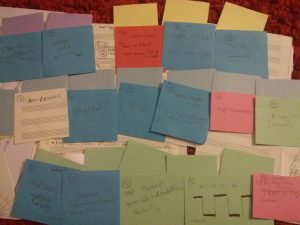
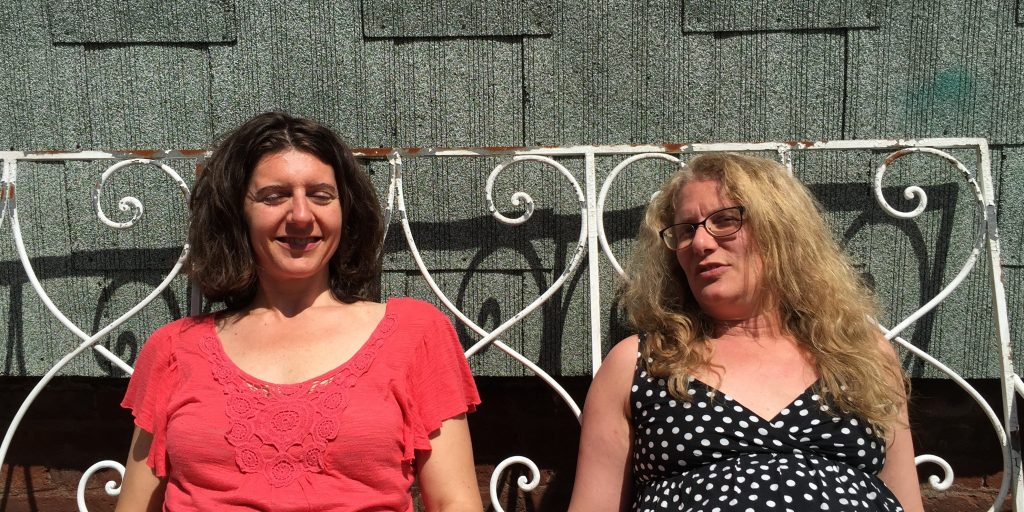
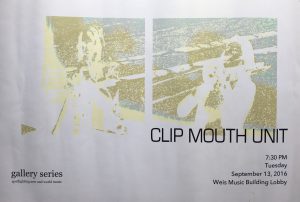
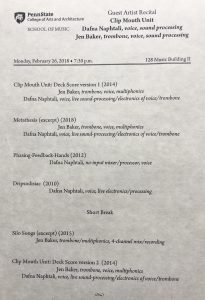



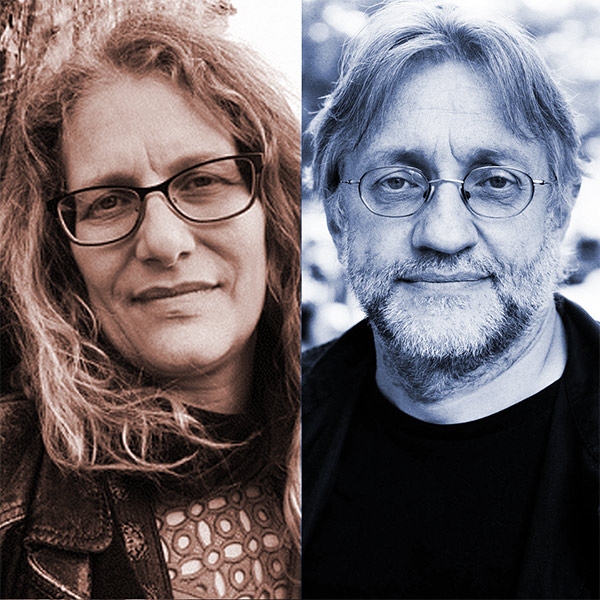

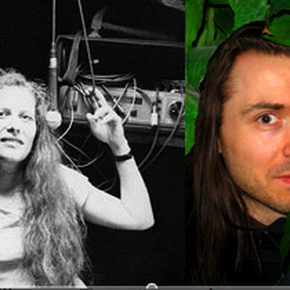

 Performer/composers Kitty Brazelton and Dafna Naphtali collaborate on a montage of extremes: textures hard/soft, noises white/red, harmony rooted/disembodied, silence. Both women sing with startling multi-octave ranges*. Both women play electric guitar / bass. Both women compose hard-core computer music. All this is woven, spliced, patched, threaded, then drummed together by BAT’s third member: Danny Tunick. Their eponymous CD was released 2003 on Tzadik label. The band active 1996-2006, on hiatus, but with a new track “Stabat Mom” still unreleased.
Performer/composers Kitty Brazelton and Dafna Naphtali collaborate on a montage of extremes: textures hard/soft, noises white/red, harmony rooted/disembodied, silence. Both women sing with startling multi-octave ranges*. Both women play electric guitar / bass. Both women compose hard-core computer music. All this is woven, spliced, patched, threaded, then drummed together by BAT’s third member: Danny Tunick. Their eponymous CD was released 2003 on Tzadik label. The band active 1996-2006, on hiatus, but with a new track “Stabat Mom” still unreleased.